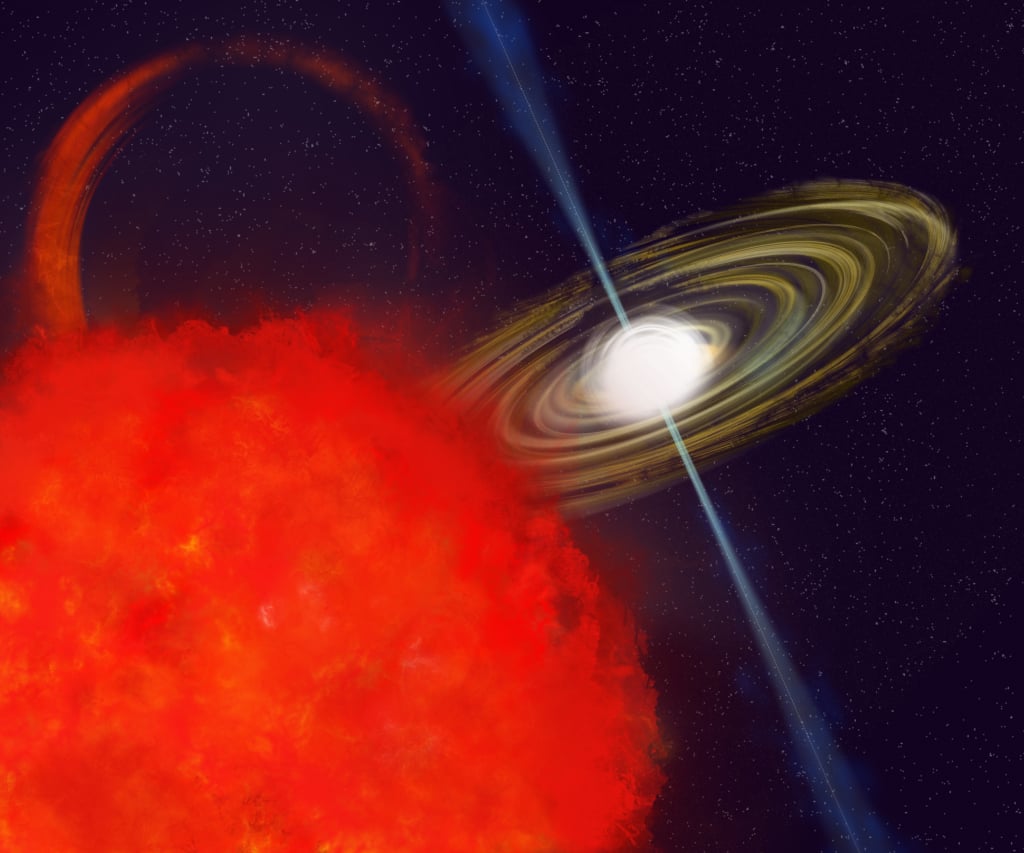A team of scientists led by the NSF’s Green Bank Observatory (NSF GBO) recently identified an incredibly rare object known as a Long Period Radio Transient (LPT), designated CHIME J1634+44. These objects are similar to Rotating Radio Transients (RRTs), which are sources of short radio pulses believed to be caused by pulsating neutron stars (pulsars). The difference with LPTs is that they have extremely long rotation periods, often lasting between minutes and hours. However, CHIME J1634+44 is the only LPT observed to date that is spinning up, as indicated by its decreasing spin period and unusual polarization.
These attributes challenge our current understanding of transient objects and raise new questions about the physics that governs the Universe. Nevertheless, the timing of the repeating radio bursts from CHIME J1634+44 is unclear. Said Fengqiu Adam Dong, a Jansky Fellow at the NSF GBO, in a NRAO press release:
You could call CHIME J1634+44 a ‘unicorn’, even among other LPTs. The bursts seem to repeat either every 14 minutes, or 841 seconds—but there is a distinct secondary period of 4206 seconds, or 70 minutes, which is exactly five times longer. We think both are real, and this is likely a system with something orbiting a neutron star.
In addition to the Green Bank Telescope, the observations were made possible using the Very Large Array (VLA), the Canadian Hydrogen Intensity Mapping Experiment (CHIME) Fast Radio Burst and Pulsar Project, and NASA’s Neil Gehrels Swift Observatory (Swift), with additional observations by the LOw Frequency ARray (LOFAR). The combined abilities of these telescopes allowed the scientists to detect and study the object’s unusual signals in detail.
The CHIME array, located at the Dominion Radio Astrophysical Observatory in southern British Columbia. Credit: CHIME
Whereas CHIME’s wide field of view detected the transient’s periodic bursts and monitored its spin, the VLA’s system for real-time fast transient searches using interferometric imaging (aka. realfast) provided high-frequency observations to correct for interstellar medium (ISM) distortions and offered more precise location data. The GBT contributed high-resolution timing data to analyze its polarization and spin, while Swift searched for X-ray counterparts, which complemented radio observations from the other observatories.
Normally, compacts objects like neutron stars lose energy over time, causing their spin to slow down and their spin period to grow longer. But when the team observed CHIME J1634+44, they found that its rotational period was getting shorter, meaning that LPT must be speeding up. Since there’s no plausible explanation for this occurring with a single star, the team theorizes that it must be part of a binary system with a shrinking orbit. This could be attributed to binary pairs losing energy through gravitational interaction or emitting gravitational waves (GWs).
This behavior has been seen with other closely orbiting white dwarfs, creating the illusion that their period was getting shorter, but no neutron stars have ever been found to do this with every burst. Moreover, the radio bursts from CHIME J1634+44 were traveling in a perfect swirl as they made their way through space, meaning they are entirely circularly polarized. This suggests that the way these radio waves are being produced is different from what we see in all other known objects. Said Dong:
The discovery of CHIME J1634+44 expands the known population of LPTs and challenges existing models of neutron stars and white dwarfs, suggesting there may be many more such objects awaiting discovery.
These findings open new avenues in radio astronomy and could help astronomers address the mysteries of rotating neutron stars, one of the most enigmatic objects in the cosmos.
Further Reading: NRAO
